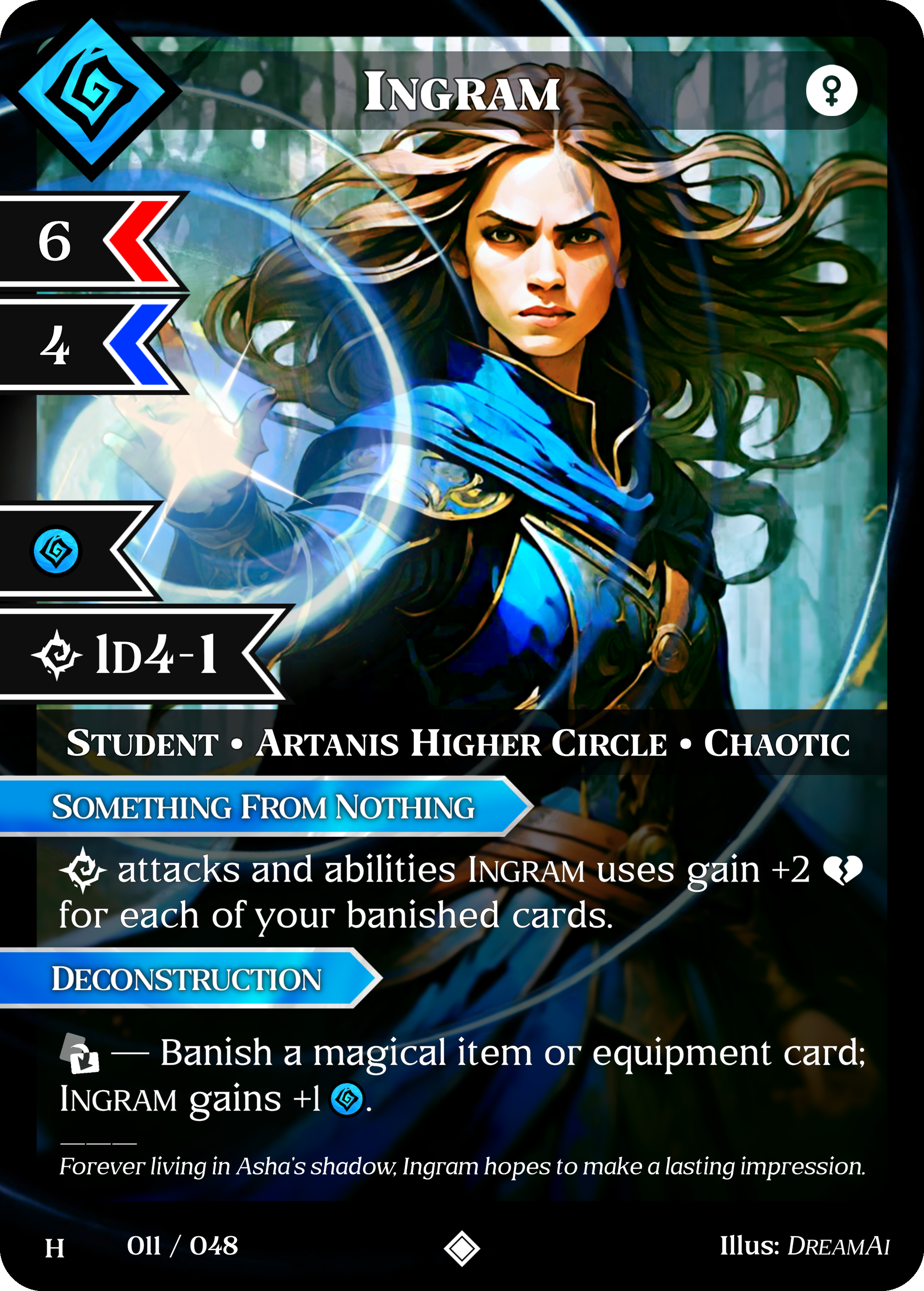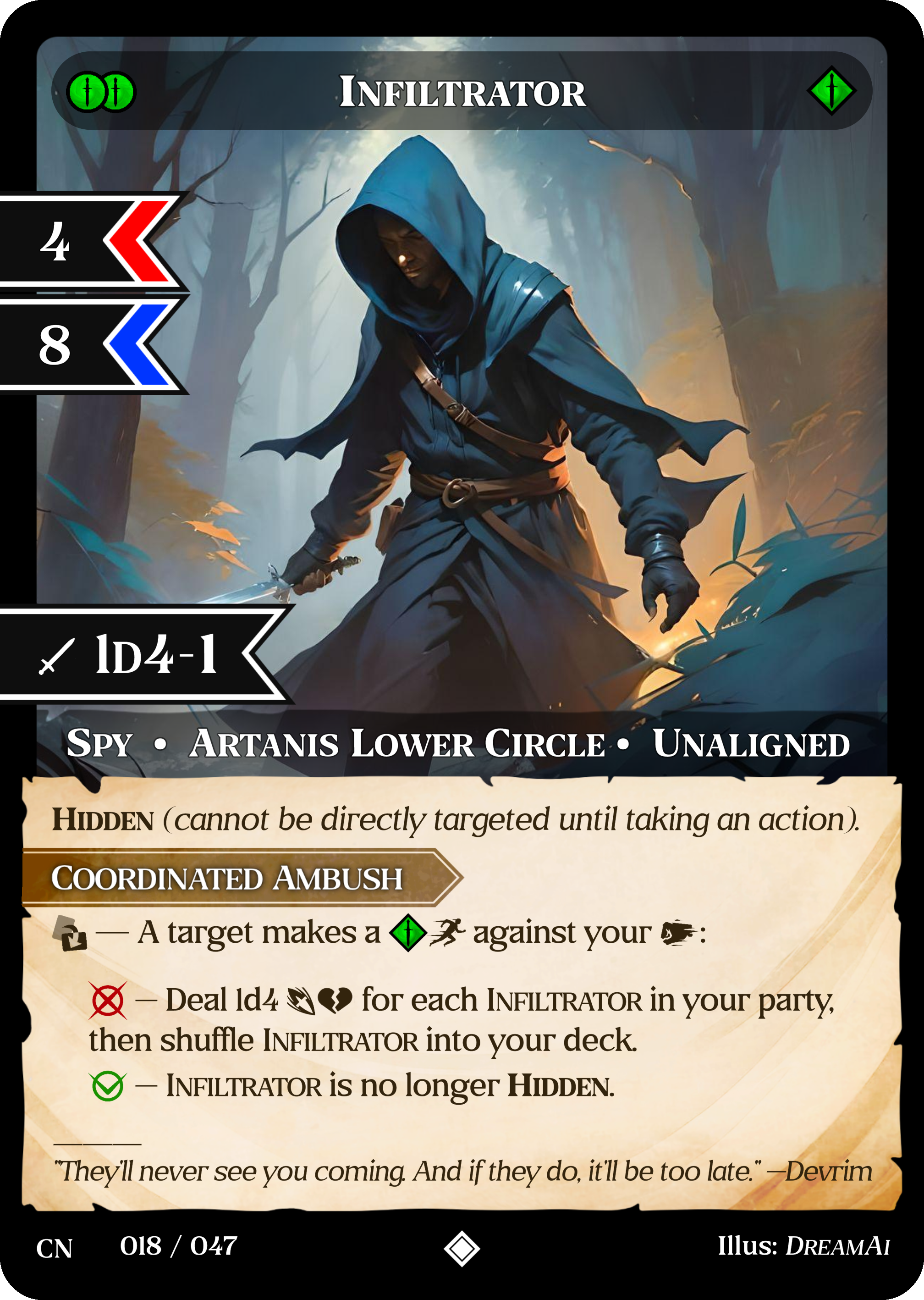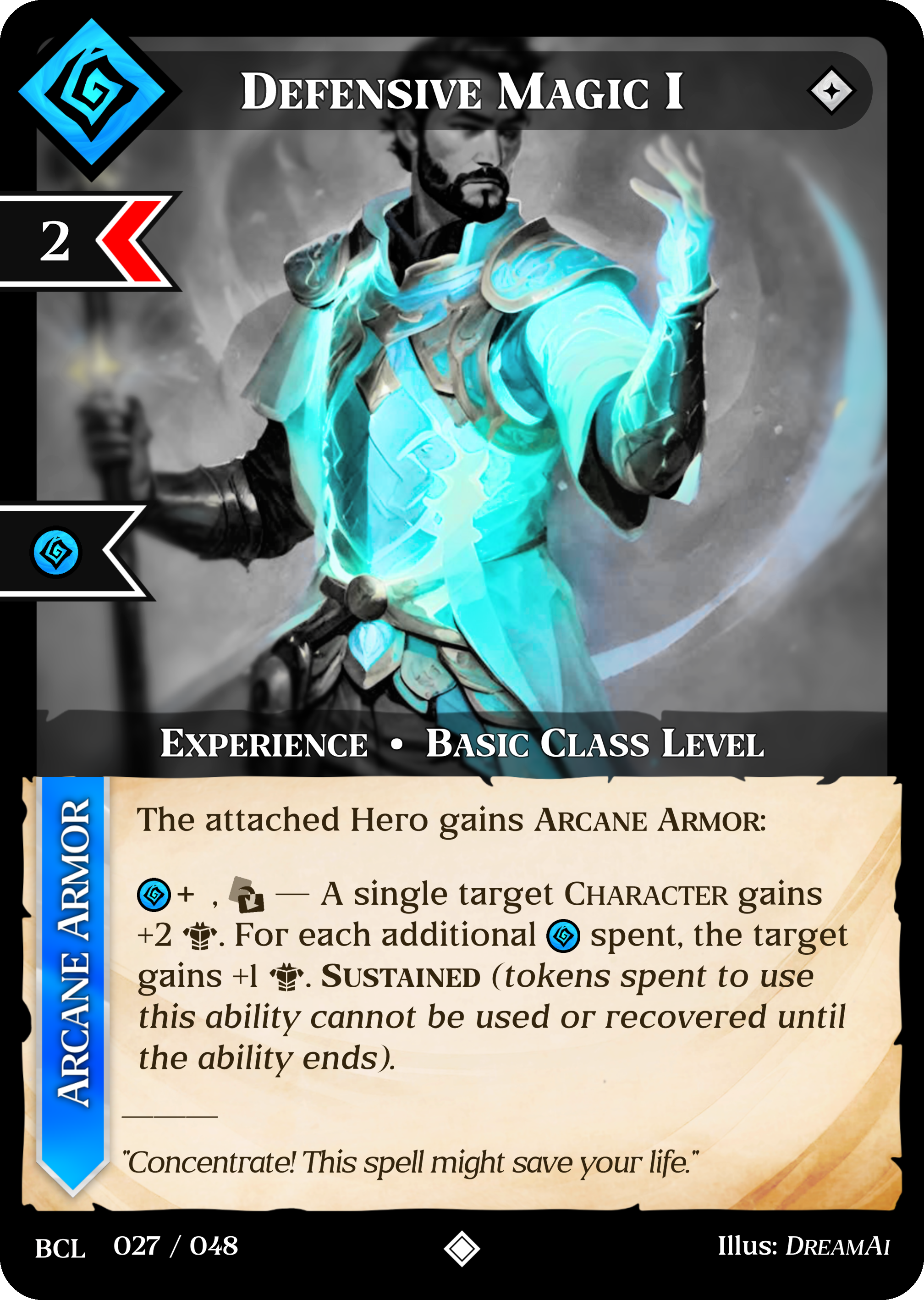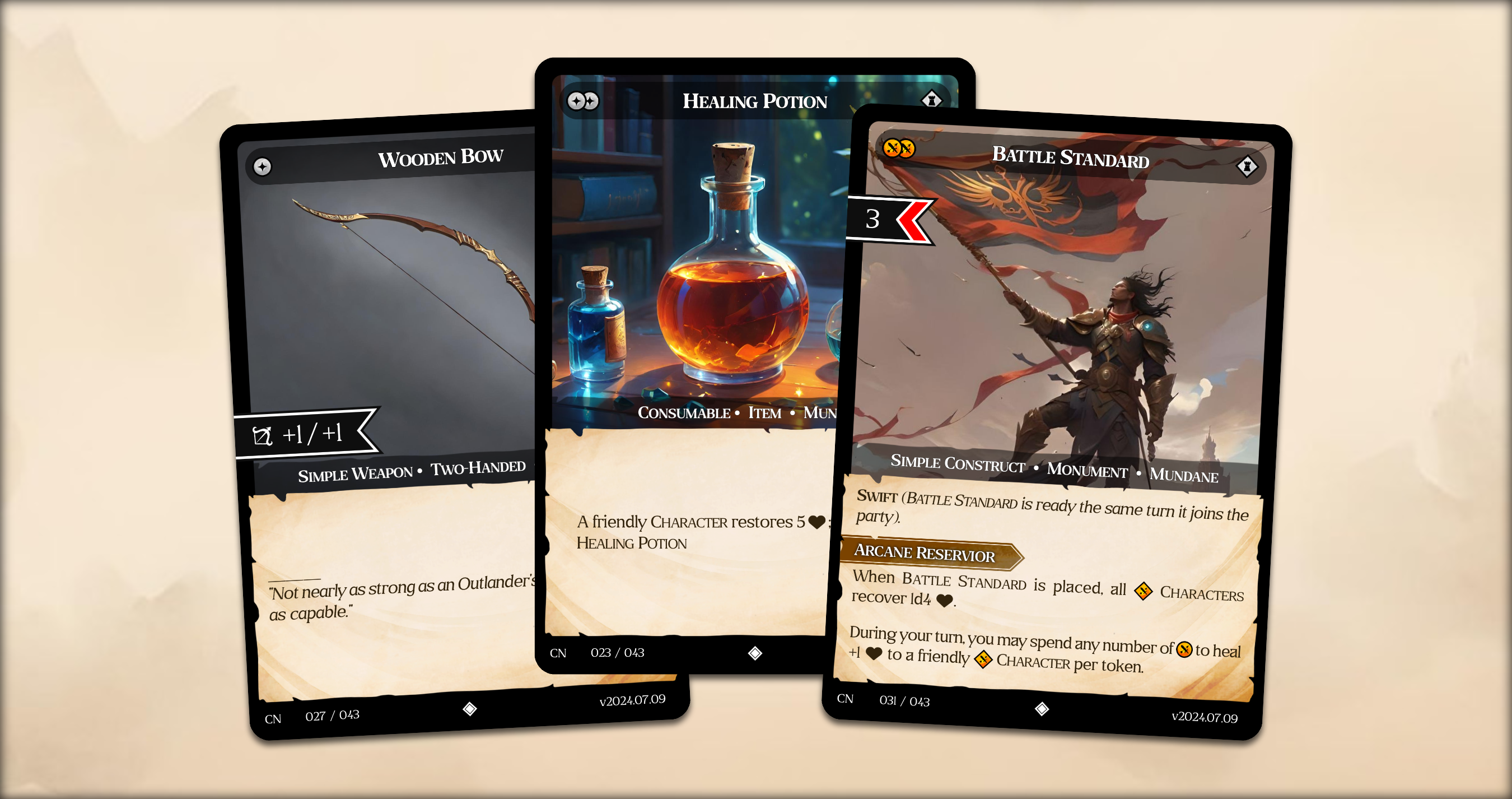Card Types
There are five types of cards in Sanctuary: Characters, Experience, Equipment, Actions, and Relics.
Characters

Heroes
Heroes are the cornerstone of your party, serving as the main figures in your deck and resource well from which other cards are put into play. Each Hero starts with a base class and comes with unique attributes and abilities that shape your chosen strategy. Heroes grow in power by taking class levels, which both expand their stats and abilities while increasing the resources you can use during the game.

Companions
Companions are the supporting characters that aid your Heroes in battle. With their own unique attributes and skills, Companions are essential for executing strategic plays, and expanding your party’s capability. Unlike Heroes, Companions can’t take class levels or use equipment.
Experience

Class Levels
Class Level cards represent the advancement of a Hero’s abilities and skills - unlocking new powers and enhancing existing ones - allowing your Heroes to evolve to meet new challenges. When a class level card is attached to a Hero, that Hero gains the attributes and abilities shown on the Class Level card.
Class Levels
Class Level cards represent the advancement of a Hero’s abilities and skills - unlocking new powers and enhancing existing ones - allowing your Heroes to evolve to meet new challenges. When a class level card is attached to a Hero, that Hero gains the attributes and abilities shown on the Class Level card.
Backstories
Backstory cards let you customize the past of your Heroes, providing them with traits and abilities based on their personal histories. On top of adding depth to your characters, Backstories offer bonuses or abilities that are mechanically unique from Class Levels.
Equipment
Consumed
Items
Items that provide various effects, such as healing or buffs.
Scrolls
Scrolls are magical items that can be used to cast spells or invoke special effects once.
Equipped
Equipment is meant to be handled or worn by a Character: weapons, instruments, armor, shields, accessories, and tomes. Characters can hold up to three pieces of equipment at once: one in each hand, and one worn. If a piece of equipment requires two hands, then a Character can't hold anything else.
Weapons
Tools of combat that characters can wield, enhancing their attack power and abilities.
Instruments
Best used by Bards to enhance abilities or provide buffs.
Armor
Protective gear that increases a character’s armor and/or agility.
Shields
Hand-held defensive items that offer protection and can sometimes reflect attacks.
Tomes
Books of knowledge that grant magical abilities or bonuses to spellcasting characters.
Placed
Constructs
Structures or mechanical creations that provide ongoing effects or support. They may operate by themselves or require a Character’s interaction.
Actions
Standard & Combined Actions
Characters can perform these during their turn, beyond their listed abilities. Some Actions allow for the combined effort of several Characters.
Reactions
Actions that can be played from your hand in response to an opponent’s action.
Immediate Actions
Actions that can be played at any time, often with instant effects.
Relics
Relics are powerful and ancient items that must be held in order to win — often with powerful detrimental effects.
Fated Occurrences
Fated Occurrences represent the Emissary's direct intervention into the fight. These emulate significant events that are otherwise outside of the Character’s control and affect all players by introducing major changes or challenges.
Tokens
Conjured/Called Entities
Magical or mundane beings brought into play by specific abilities. These tokens have their own stats and effects.
Ability Tokens
Tokens that represent the resources available to use items, actions, or add Characters to the party.
- Gaining Tokens: Characters gain ability tokens shown on the face of their cards when they are put into play. Ability Tokens are ‘held’ by the Character that brings them into play. Some Equipment and abilities may give, remove, spend, or recover tokens to specific Characters in play. Unless otherwise stated, Tokens held by any Character can be used by any other Character or card in play.
-
Placement and Use: Tokens are placed on or below the holding card face. Players spend tokens to play cards from their hand or use abilities stated on cards in play. When a token is spent, it’s is flipped up-side down. When a token is *recovered*, it’s flipped right-side up.
-
Token Recovery: Ability tokens are *recovered* at the rate of 1 token of their base class plus 1 token of each attached Class Level per turn. Some Equipment and abilities may recover tokens in other ways.

